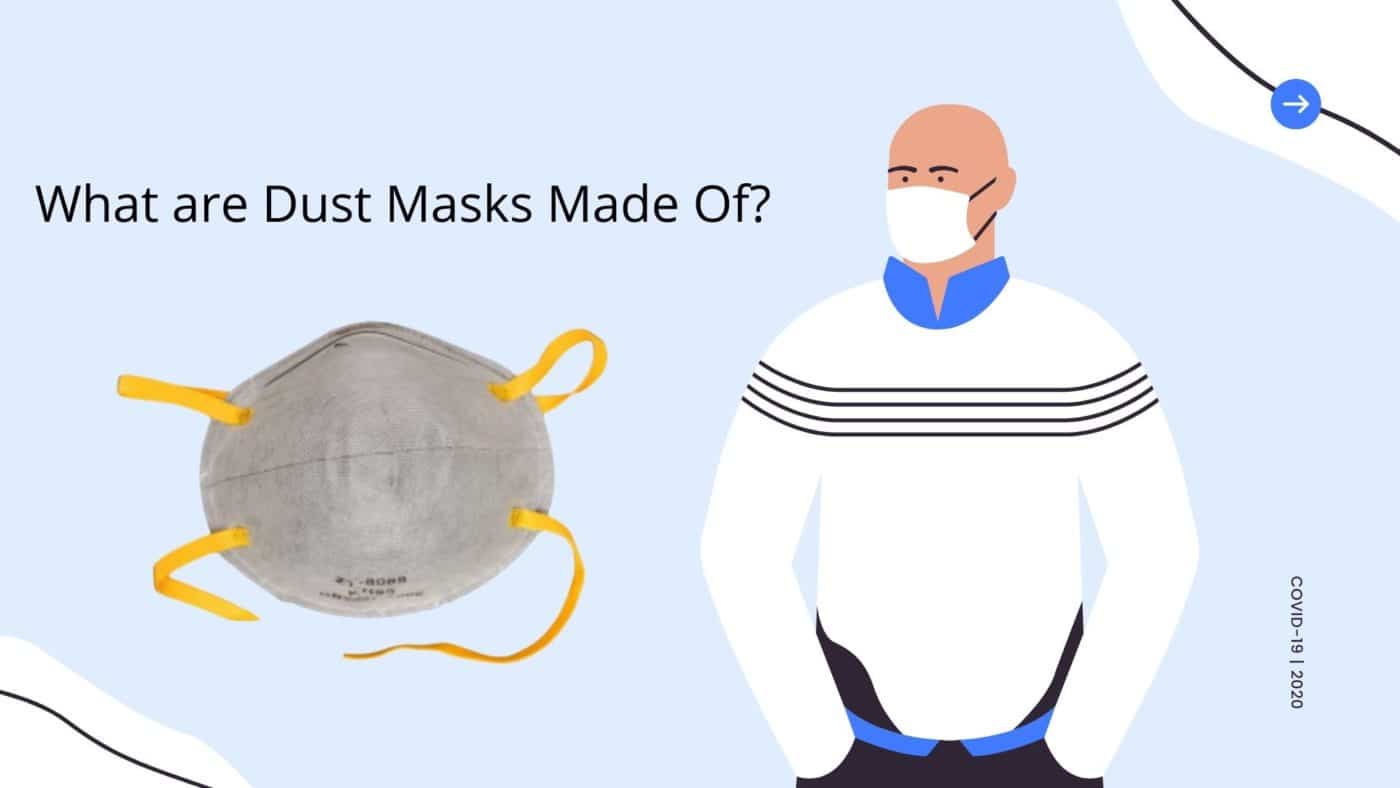Face Masks
What are Dust Masks and What are They Made Of?
Not all dust masks are equal. The levels of protection provided vary greatly. Some are mere face coverings, preventing large-scale dust and particulates from entering the body. In contrast, the highest quality masks, such as the N95 dust mask, filter so effectively to avoid exposure to bacteria and even some viruses. As such, these latter masks have become increasingly popular this year, following the COVID-19 pandemic.
The key to understanding and evaluating the quality of dusk masks is understanding how they are made and what they are made of. In this article, we’ll examine the different types of masks and the material used. So, when you come to buy a dust mask here at CanGard, you know what you are buying.
Let’s get started.
The Basic Mask
These masks are the most basic protection you can buy, equivalent to a European FFP1 or having no rating. Typically, such masks will leak at or below 22%, giving the user around 80% protection. These masks are used for DIY jobs and prevent exposure to heavy dust from plaster, cement, silica, and more.
Comfort or nuisance dust masks are made from a moulded hard paper cup. Elastic is stapled at the sides to keep the mask stuck to the face, and there is a metal nose strip for comfort.
However, FFP1 dust masks are slightly more complicated—these involve polypropylene melt-blown cloth. Typically, the weights of the fabric are between 30g/sm and 75g/sm. Two to three layers are used to provide an absorbent membrane, preventing large dust from getting through. Often FFP1 dust masks do not have a filter, but some will contain a small plastic filter.
N95 Mask
The Fabric
N95 masks filter out at least 95% of airborne particles. They are equivalent to the EU FFP2 respirators (which must achieve at least 94% filtration). It was these masks that were in short supply during the early months of the global pandemic. Part of the reason was that N95 dust masks require a special nonwoven polypropylene fabric that was in a worldwide shortage.
This fabric prevents particulates’ passing, such as mucus, cough sputum, and other viral particles, from passing through the mask. The filaments of the fibres have a diameter of less than one micron. This fine-scale material is created by melting plastic and then blowing it into strands and, finally sheets.
Such material is not comfortable with making and requires the highest quality machinery. Hence, the difficulty in ramping up production at the start of the pandemic.
Added Protection
Due to the higher standards, N95 masks are more challenging to breathe through than FFP1 masks. However, this difficulty comes with much greater protection. Therefore, some manufacturers have taken to including valves in their masks. These are plastic valves found in the front or side of the mask. They allow unfiltered air to escape when you exhale. Some filters also contain activated carbon, known for its ability to absorb airborne particles.
Meanwhile, other manufacturers apply an electrostatic charge to the polypropylene material. This makes the fabric more attractive to particles, preventing them from getting through. Doing so improves the filtration of the mask and means less material needs to be used, improving breathability. As such, the weight of the material can vary from 10 to 300 g/sm.
The Straps
The straps of most masks are a form of woven elastic and cotton. However, some companies use natural or synthetic rubber, such as polyisoprene. The benefit of rubber is that it is less likely to contain dust in the material, and it can be wiped clean. However, some report more discomfort as compared to fabric straps.
The material used for the straps can also determine the lifespan of the mask. Rubber bands are likely to loosen or snap following heavy use. In contrast, elastic straps will survive either modern-day COVID requirements or DIY/worksite use. As the benefits are derived from a firm seal around the face, picking the strap’s right choice is vital.
Fasteners and Nose Clips
Finally, there are the metal parts of the mask. To fasten the straps to the mask, metal staples are used. The staples are usually made of steel and so are sturdy and long-lasting. On the other hand, the nose clip – which helps secure the mask at the top – is often made from aluminum. This is because aluminum is easier to bend and lighter. It, therefore, provides a more comfortable fit. However, to improve comfort, nose foam is often used on the underside. This foam is made from polyurethane.
Conclusion
In short, N95 masks are a complicated and high-tech business. They involve the finest quality machinery to produce the most precise and high-quality man-made fabrics in existence. Melt-blown polypropylene is the primary material used to provide filtration, with a plastic exhalation valve option. Straps are made from either rubber or elastic fibre. Then, finally, metal staples and nose straps are used to secure and provide structure.
Here at CanGard, we sell a full variety of N95 dust masks. Our masks are of the highest quality and come in various styles to suit different face shapes. So, now you’re armed with the knowledge of what dust masks are made of, which one will you choose?

